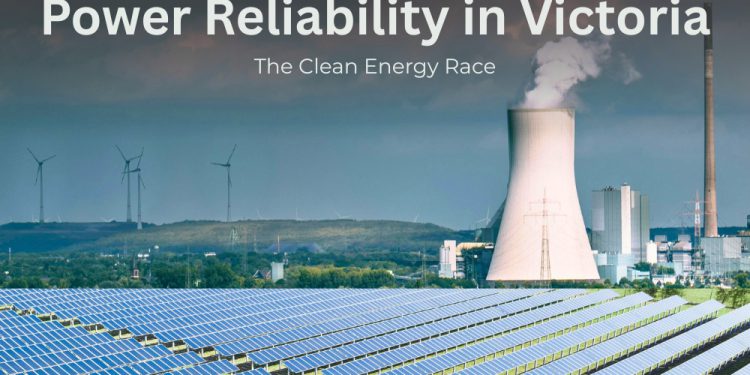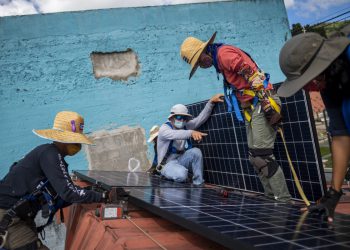Power reliability risks in Victoria are rising as the state retires ageing coal plants, expands variable renewables, and faces more extreme weather. This post examines the most significant near-term and medium-term risks to Victoria’s electricity supply, who’s responsible, and practical steps homeowners and businesses can take now. Read on for clear, actionable guidance and learn how to protect your home and business with solar, batteries and smart energy choices.
Why these risks matter now
Victoria’s electricity system is changing quickly. A planned exit of major coal generation — together with ageing plant failures — can erode reserve margins and increase reliance on imports and fast-start resources during heatwaves. AEMO’s planning documents and Victoria’s own planning reports flag these issues as priority risks for safe, secure operation.
Key risk 1: Ageing coal and unplanned outages
What’s happening: Units at Yallourn and other thermal plants have experienced unplanned outages and mechanical failures this year, reducing available dispatchable capacity.
Victoria’s energy system has traditionally depended on the Latrobe Valley’s three brown coal power stations: Yallourn, Loy Yang A, and Loy Yang B. These plants supply baseload power, delivering consistent, dispatchable electricity around the clock. However, Yallourn is set to close by 2028, with the Loy Yang plants following in the mid-2040s, creating a significant energy gap.
Why it’s risky: When a large thermal unit goes offline during a heatwave, wholesale prices spike and system security becomes fragile. Backup options may be limited if transmission and interconnection aren’t available.
- The loss of baseload: The retirement of plants like Yallourn removes a large, consistent source of power from the National Electricity Market (NEM). This capacity must be replaced by new generation sources, primarily wind and solar, alongside ‘firming’ technology.
- The reliability gap: The Australian Energy Market Operator (AEMO) has consistently warned of potential reliability gaps in Victoria, especially in the mid-to-late 2020s, if new capacity and transmission projects are delayed. This risk increases during extreme weather events when demand is highest.
- A need for speed: The challenge is a race against the clock. New generation and storage projects, which take years to develop and commission, must be delivered faster than the remaining coal capacity deteriorates or retires to maintain power reliability.
Key risk 2: Transmission delays and constrained flows
The Victoria-NSW Interconnector (VNI) West and related lines are critical for moving renewable energy and providing firming services across regions. Delays, route changes or cost blowouts slow the arrival of large-scale renewables and reduce system flexibility.
Integrating vast amounts of new renewable energy, primarily from regional Renewable Energy Zones (REZs), into the existing transmission network is a major hurdle. Victoria’s legacy grid was designed to deliver power from the Latrobe Valley to the major load centres, not from numerous, dispersed wind and solar farms.
Operational impact: Without timely interconnection, local shortfalls require emergency interventions or reliance on costly local generation.
- The REZ challenge: Renewable Energy Zones are areas with high-quality solar and wind resources, but they require new, large-scale transmission lines to connect them to cities and industrial centres. Delays in key projects risk stranding renewable energy and worsening system reliability.
- Key interconnector projects: Crucial new projects such as the Victoria-NSW Interconnector (VNI) West and the Western Renewables Link are essential for enabling power sharing between states and within Victoria. Progress on these major infrastructure developments is critical for grid stability and reducing wholesale electricity prices.
- Community and regulatory hurdles: Delays often stem from complex regulatory approvals, land access disputes, and the challenge of securing a social license to operate within regional communities. The Victorian Transmission Investment Framework (VTIF) and VicGrid’s work are designed to streamline this planning, but the physical construction remains a significant task.
Key risk 3: Extreme weather and climate change
Climate change is already impacting the Victorian grid. Extreme weather events place immense stress on both supply and demand, exacerbating power reliability risks.
More frequent heatwaves mean higher peak demand (aircon, refrigeration) and an increased risk of simultaneous equipment stress and bushfire. Victoria’s climate science analyses show clear trends that intensify these threats.
Infrastructure vulnerability: Overhead lines, transformers and large substations are exposed to fire and storm damage, raising restoration times after events.
- Heatwaves and peak demand: Hot weather dramatically increases demand, primarily due to air conditioning. Heatwaves also reduce the efficiency of thermal generators and can cause transmission lines to sag, risking power line faults or even cascading failures if protective systems are triggered.
- Bushfire threat: Bushfire smoke can significantly reduce output from solar farms and rooftop PV. More dangerously, fires can physically damage transmission towers and lines, leading to widespread outages, as seen in past fire seasons.
- Floods and storms: Increased storm intensity and flooding also pose a threat to critical infrastructure, requiring greater network resilience and a stronger focus on preventive maintenance and grid hardening.
Key risk 4: Rapid rooftop solar uptake and inertia loss
Distributed solar PV growth reduces daytime demand but shifts peaks to late afternoon/evening, complicating supply/demand balancing. AEMO identifies system security issues related to inertia and frequency control as more synchronous machines retire.
Solar and wind generation are intermittent, meaning they produce power only when the sun shines or the wind blows. This variability is a direct threat to the NEM’s stability and must be addressed with robust energy storage and firming capacity.
What this means for reliability: Fast ramps, voltage fluctuations, and local network constraints can force curtailment or require special operational rules unless managed with storage, controls, and grid upgrades.
- Long-duration storage: Short-duration batteries are only a partial solution. Victoria must determine the most efficient policy to deliver long-duration energy storage, such as pumped hydro or green hydrogen, to provide power for days rather than just hours.
- Gas and other firming: In the short to medium term, flexible gas-fired generation may still be required to provide rapid-response firming capacity, although this is complicated by Victoria’s efforts to phase out fossil gas. Ensuring these existing gas assets remain available or are upgraded is a balancing act.
- Battery Energy Storage Systems (BESS): Large-scale batteries, such as the Victorian Big Battery, are vital for storing excess renewable power and rapidly releasing it during peak demand or when generation drops. More substantial investment in utility-scale and neighbourhood batteries is needed to ensure power reliability during ‘dark and still’ periods.
Use Energy Matters’ easy-to-use solar power and battery storage calculator to determine the size of your solar system with storage! Our solar calculator will generate performance information and potential savings.
We can send this information to 3 of our pre-vetted and trusted local installers in your area to receive obligation-free solar quotes and take the first step towards true energy independence!

The path to a reliable future
The transition demands a whole-of-system approach, in which consumers, government, and industry work together to achieve secure power reliability. The integration of distributed energy resources (DER), such as rooftop solar and home batteries, through Virtual Power Plants (VPPs) will be crucial for managing peaks and enhancing grid stability.
Victoria faces a multi-faceted reliability challenge as old thermal plants retire, transmission projects lag, and extreme weather intensifies. The good news: many practical mitigations exist — from grid upgrades to household solar + batteries.
Act now to support a stable energy future—explore your clean energy options with Energy Matters to be a part of the solution. Contact Energy Matters today for a tailored resilience plan.
















